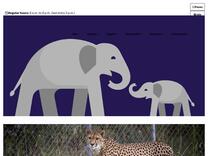Case Study: Scenario Planning in Northwestern Virginia | Smithsonian’s National Zoo and Conservation Biology Institute https://nationalzoo.si.edu/conservation-ecology-center/case-study-scenario-planning
Challenge How can scientists produce research on environmental topics impacting local communities that decision makers in those communities can trust? In August 2016, scientists from the Changing Landscapes Initiative collaborated with community leaders in Northwestern Virginia to answer that question. This case study shows how CLI researchers combined community knowledge with scientific data to create a set of future scenarios designed to help planners make important land use choices.
Narrative “Strong long-term planning and minimal climate impacts have led to the

